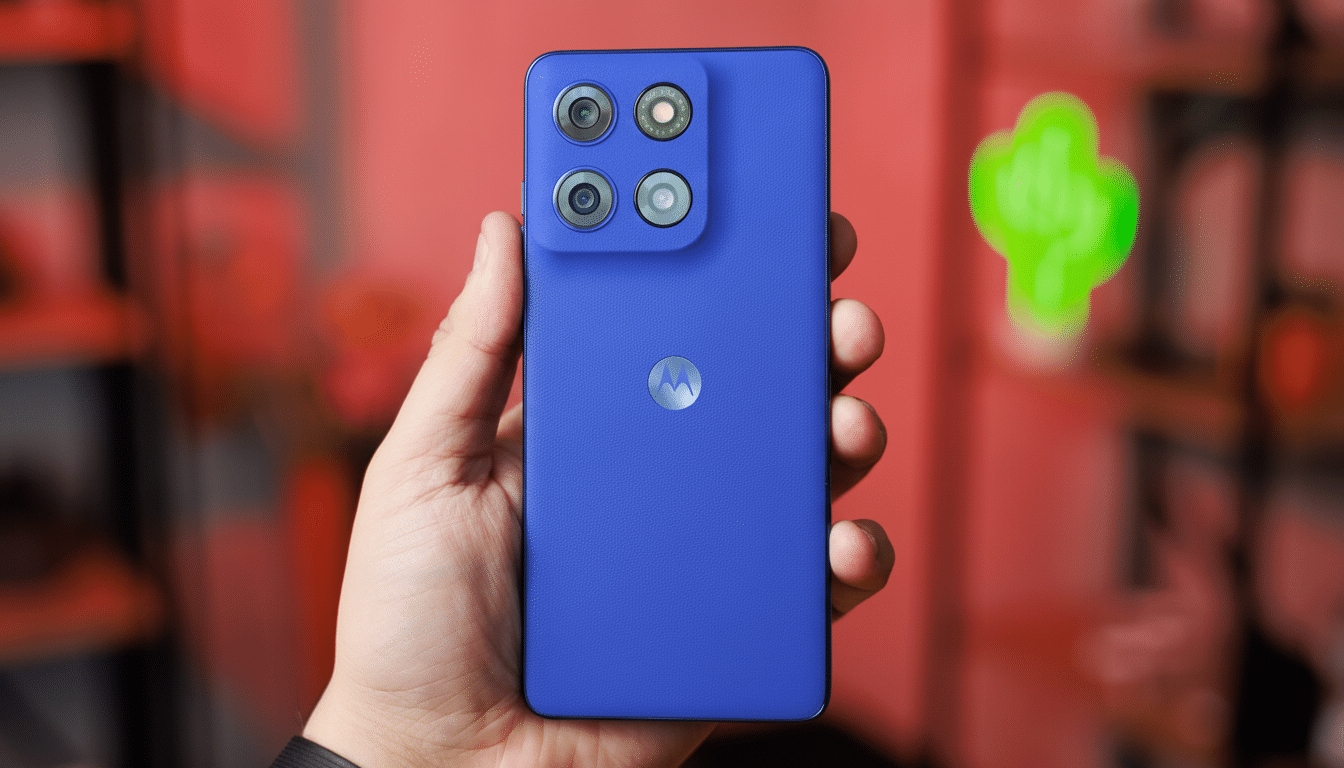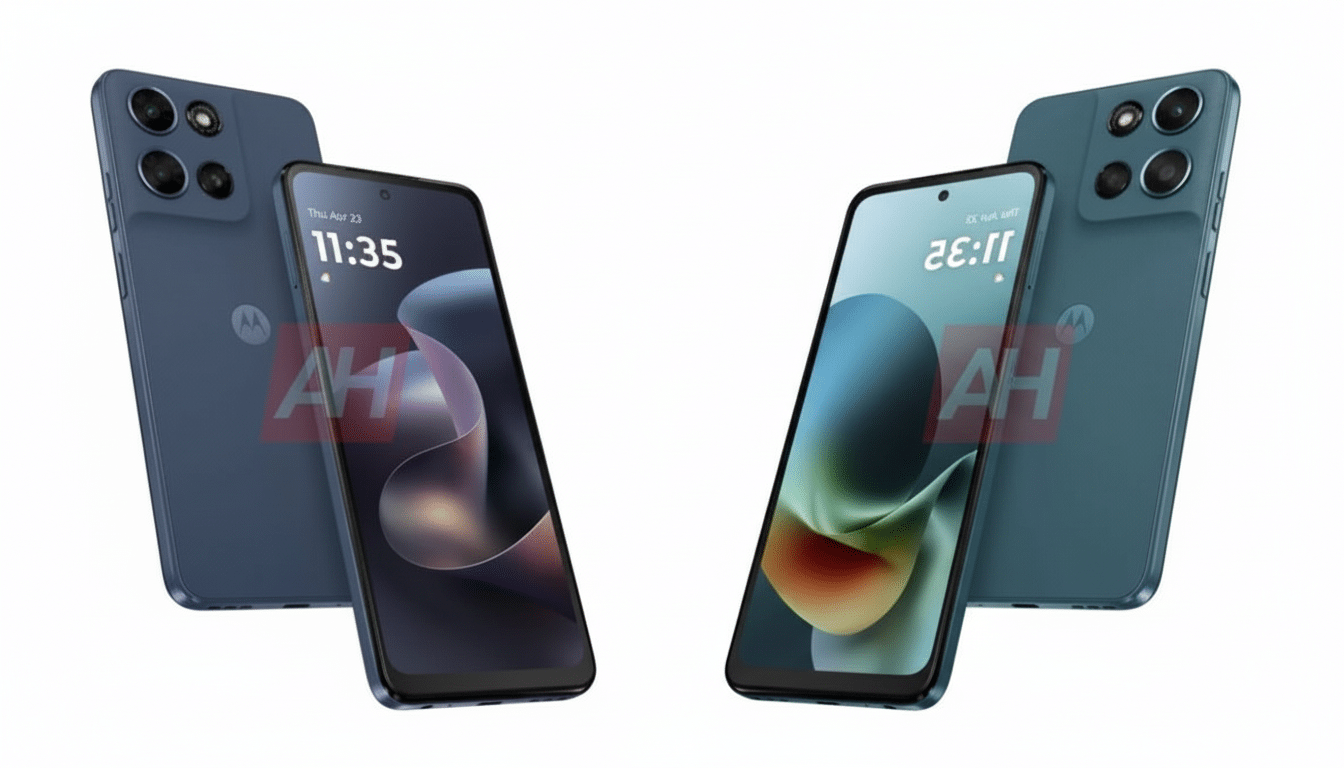New real-life shots of the Moto G Stylus (2026) have appeared via certification materials, providing our most detailed look yet at Motorola’s next low-cost stylus phone. Shared by trusted tipster Sudhanshu Ambhore, the pictures show a flat screen with thin bezels, a beige leather-like back, and a triple rear camera layout in keeping with the line’s no-nonsense, pen-first philosophy.
First look at the phone confirms a known formula
The phone in these images veers toward a clean, rectangular design with a flat panel and evenly sized borders—reflective of the minimalist design aesthetics in recent Moto G offerings. On the right edge sit power and volume keys, and even though the footprint isn’t as svelte, it promises to be comfortable to hold in hand for writing and sketching with said pen.

The stylus-centric G series has been all about mildly sexy utilitarian hardware rather than absurdly speculative, self-indulgent noodling up to now, and this initial peek suggests another evolution of the series, not a honking great handbrake turn.
That isn’t necessarily a bad thing; predictability is not something that case makers and business buyers ignore when planning around the same footprint every year.
Leather-textured back and colorway details
The most eye-catching visual change is the leather-textured beige rear panel. It appears to be a faux leather finish, which could lead to better grip or add some luster and hide fingerprints on a value-tier device. Motorola has embraced tactile finishes across its range, and this might go some way to making the G Stylus (2026) feel more upper midrange without bulking up the price.
Industry rumblings also suggest that the Pantone Color Institute’s rumored forthcoming standard might be setting the special-editions trend in motion—and Motorola has had partnerships with Pantone-branded colorways in the past. If you can trust those plans, a few limited shades will also be released alongside core colors such as the beige pictured here.
Triple camera setup: what to expect this time
Three rear lenses are visually apparent in the images. A good combination in the segment would be a high-resolution main sensor coupled with ultrawide and close-up/depth cameras. Recent G Stylus editions have gone for dependable daylight performance and simple portrait effects rather than telephoto aspirations, and the hardware here looks in keeping with that playbook.
In the certification photos, specs aren’t called out, but expect iterative advances in computational photography, faster focus, and potentially more consistent color tuning—areas that software can band-aid with midrange sensors.

Motorola has been refining low-light processing and faster HDR in recent camera updates, which are probably targets for further improvement.
Stylus in a niche market with loyal followers
And few of today’s phones launch with a pen on board. Samsung’s Ultra line rules the high end, but there’s little competition below that level and it’s fading fast—which is where the G Stylus family has its devoted following: students, field workers, and note-takers who like a siloed stylus (one you don’t have to recharge) without paying a flagship price.
There is real commercial value in that niche. Motorola has been a top-three player in the US for multiple quarters, securing just under 10% market share overall but with a disproportionate footprint in prepaid channels, Counterpoint Research said. A dependable pen-enabled midranger helps keep that footprint alive, though, by providing a tangible way to stand out from rival members of the same price club from Samsung, OnePlus, and TCL.
Trail of certifications teases launch schedule
Regulatory certification imaging usually crops up as a device approaches its final authorization—usually weeks to a few months in advance of when it’s due to be available in stores. The fact that polished hardware is present in these photos means design is firmed up, and the only questions left are around chipset type, battery capacity, charging speed, and software promises.
Motorola has hedged on using both Qualcomm and MediaTek’s midrange platforms for now, but still packs all-day endurance and a practical charging rate. If that strategy carries over, look for the G Stylus (2026) to prioritize battery life and dependability over big wattage claims; meanwhile, Android and Moto’s fairly unobtrusive skin can be expected to add stylus shortcuts, pen input recognition, and note-taking directly from the lock screen.
Bottom line: what these Moto G Stylus 2026 leaks show
These first real-world photos leave little to the imagination: the Moto G Stylus (2026) doesn’t stray far from its mission statement with a flat screen and right-side buttons, while it tweaks the look through use of a triple camera hump and a more premium-feeling leather-like texture.
The big remaining unknowns—processor, camera sensors, and price—will decide whether it’s enticing against a crowded midrange, but that design marks a confident and purposeful update for stylus fans who prioritize utility over flash.

